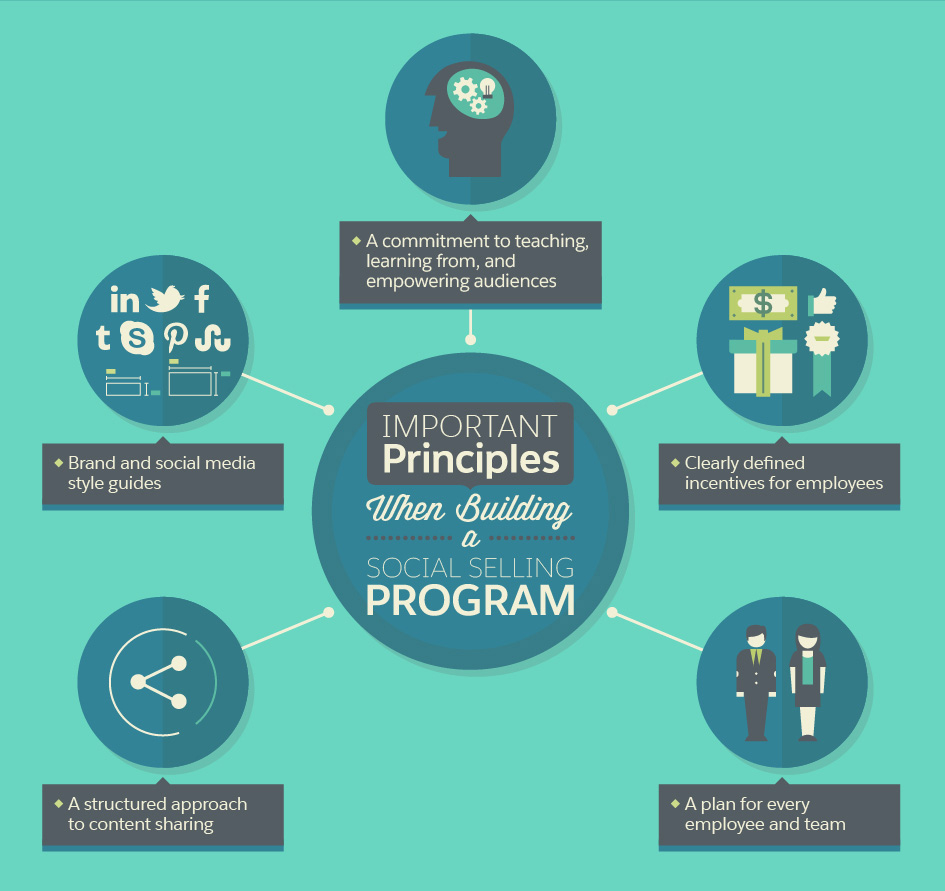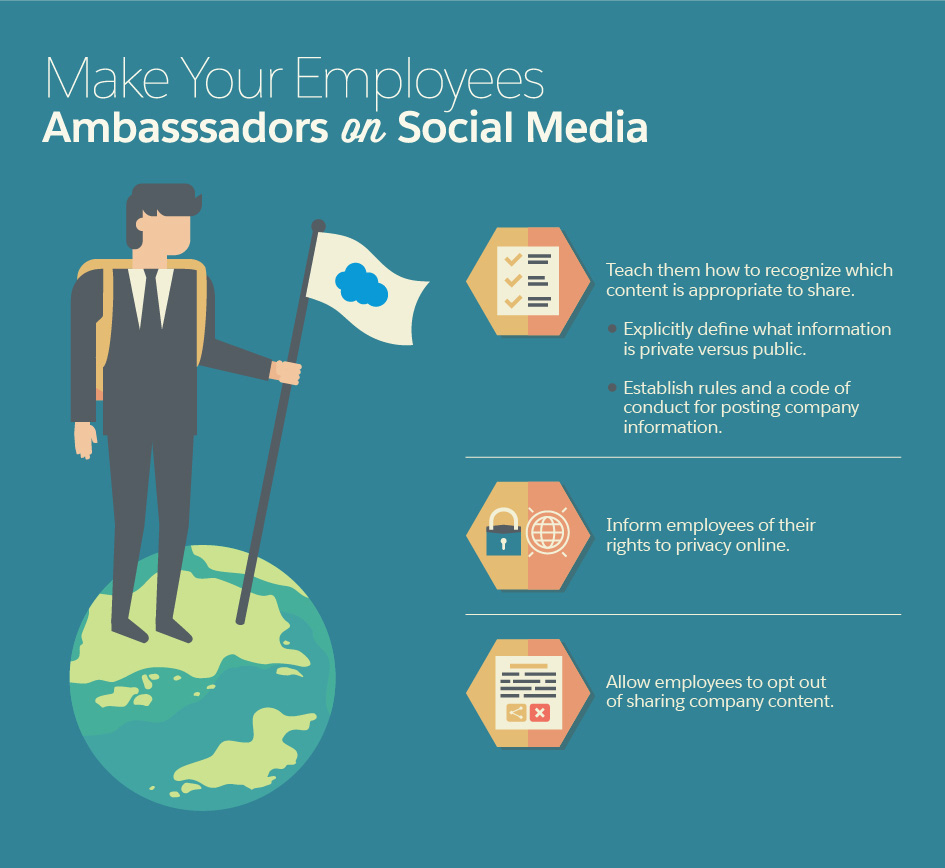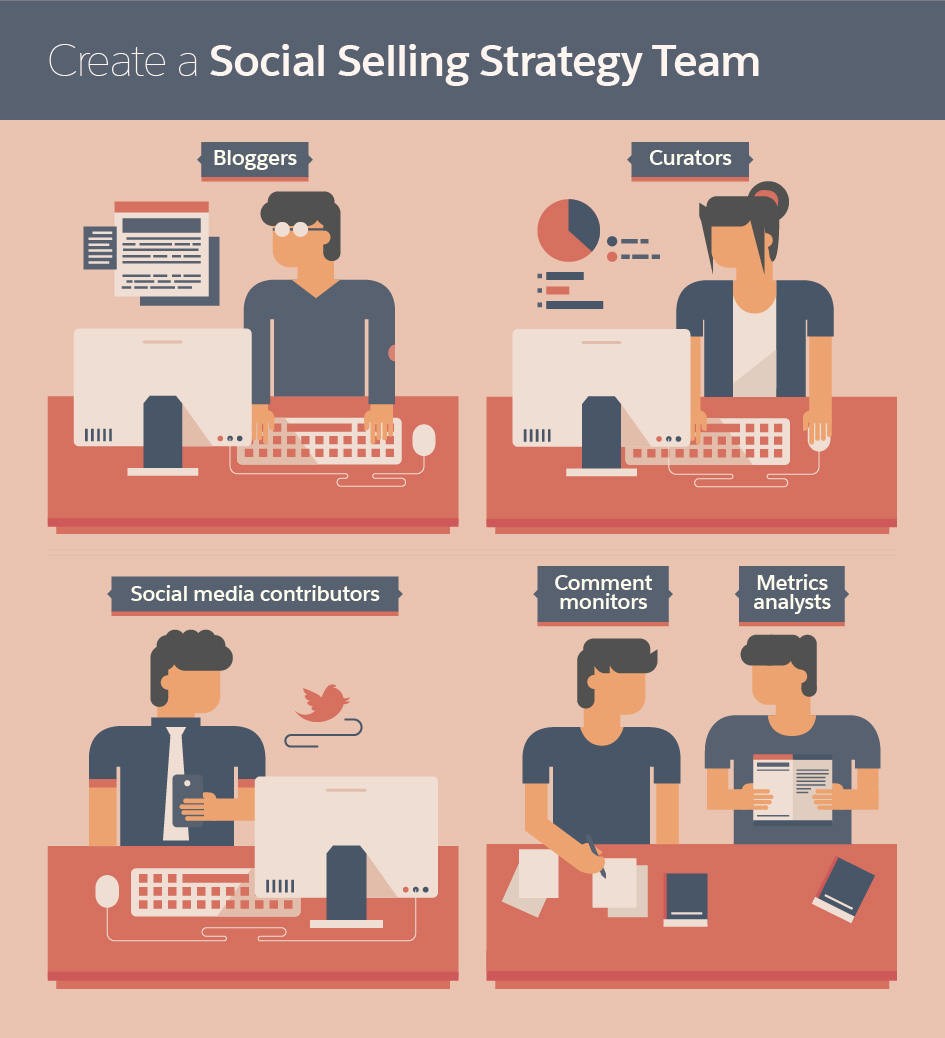One of the biggest challenges the business community faces is gaining consumers’ trust. Today’s buyers are highly skeptical of empty sales promises, marketing hype, products that under-deliver, and up-selling pressure from salespeople. Only four per cent of consumers think that the marketing industry behaves with integrity. Additionally, 54 per cent of businesses cite pressures for business growth and money/greed as barriers to innovation.
That’s where social selling—the ability for a business to influence prospect perceptions through platforms such as Facebook, Twitter, and LinkedIn—enters the picture.
As this article points out, selling has always been social. Driven by interpersonal relationships, sales reps have always relied on their professional communities to make introductions, generate word of mouth awareness, and build their reputations. What social media introduces is a new mechanism to accelerate connections at scale. In contrast to 1:1 conversations, platforms like LinkedIn and Medium, for instance, enable companies to reach thousands of people with one simple message.
A successful social selling strategy, however, requires more than a status update that says, “I’m selling product X.” In fact, this approach will drive prospective—and skeptical—buyers away. Successful social selling strategies are the polar opposite of self-serving approaches, and in a way take the sales out of customer acquisition and growth.
Here are the five pillars that every organization should keep in mind when building a social selling program.
Important Principles When Building a Social Selling Program
- A commitment to teaching, learning from, and empowering audiences
- Brand and social media style guides
- Clearly defined incentives for employees
- A structured approach to content sharing
- A plan for every employee and team

1. An organization-wide commitment to teaching, learning from, and empowering audiences
The pressure to sell can be a double-edged sword. It can help organizations reach their quotas, but it can also scare away prospects who might not be ready to make buying decisions.
Contrary to what the term may suggest, social selling is not about sales; rather, success comes from a commitment to educating and enlightening audiences with helpful information. Through this process, brands—and specifically, sales reps—have the ability to become trusted, public-facing advisors. Over time, these individuals will become key information pillars and inbound lead magnets.
Before choosing any tools or building out any campaign ideas, organizations need to take a step back and make sure team members are aligned around a common mission and vision: to prioritize prospect education and empowerment over sales. Far too often, sales reps are under pressure to fulfill aggressive quotas. While these benchmarks are important, they are only part of the sales success equation. The most successful sellers are empowered by their organizations to attend community events, blog, and build relationships with stakeholders.
Companies need to take a step back and make sure they’re replacing the pitch process with an approach that helps sales reps operate as empathizers, teachers, and consultants. This mindset allows an organization-wide social selling program to thrive.
2. Brand and social media style guides
For a social selling program to be successful, employees need to be active on social media. The problem, however, is that some team members may be hesitant to blur the lines between their personal and professional lives. At key tweeting or blogging moments, many questions run through employees’ minds:
- Will I get in trouble for posting this article?
- Is this content appropriate to share with my Facebook friends?
- Will my employer start watching my Twitter feed?
- What if I don’t want to share PR materials from my company?
- How do I know if I’m disclosing too much information?
The list goes on.
Before devising a social selling strategy, organizations will need to create a brand style guide that clearly outlines the basic dos and don’ts of social media. These rules should include the handling of proprietary information, in addition to best practices for how employees should identify and disclose their company affiliations. The goal of this process is to clarify uncertainties in a way that gives team members the ability to build their professional identities in a safe, fun, compelling way. When crafting a brand style guide, organizations should make employee empowerment a priority.
Make Your Employees Ambassadors on Social Media
- Teach them how to recognize which content is appropriate to share
- Explicitly define what information is private versus public
- Establish rules and a code of conduct for posting company information
- Inform employees of their rights to privacy online
- Allow employees to opt out of sharing company content

3. Clearly defined incentives for employees
Social media participation, in many ways, is a big “ask” for organizations to make of their employees. For many team members, the idea of using social media for business is very new. Additionally, some people prefer to keep their work and personal lives private. By asking or telling employees to participate in a social selling program, you may cause discomfort.
Instead, organizations should help team members see why social media participation is important. The goal is to help employees see that social selling isn’t a marketing ploy—it’s an investment in every employee’s online presence and industry reputation.
By participating in a social selling program, employees will build their professional identities and become more visible as leaders within their communities. The benefits your company receives will be a byproduct of the investment you make in them to become seen as the experts they already are.
Make sure that every employee understands why social selling is important to them and their professional futures. As part of this process, it is important to clarify that program participation is optional.
4. A structured approach to content sharing
Content drives social selling. The challenge, however, is that great content is often challenging to find. Your team members are busy and don’t have time to sift through interesting articles to share.
That’s where the marketing team can help: Curate lists of articles to recommend to your fellow employees. Create lists you can deploy on a regular basis so your team members have a continuous stream of information. Content can include blog posts and articles from your company’s content marketing team. More importantly, marketers and social selling program managers should focus on curating resources from a variety of reputable sources.
If your social selling program is too self-centered around your own content, your employees and their followers notice (and get annoyed). Solve this problem by empowering your employees with a diversity of options to share.
5. A plan for every employee and every team
Create a Social Selling Strategy Team
- Curators
- Bloggers
- Social media contributors
- Comment monitors
- Metrics analysts



